The Gigabyte UD1000GM PG5 1000W PSU Review: Prelude to ATX 3.0
by E. Fylladitakis on June 23, 2022 8:00 AM EST- Posted in
- Cases/Cooling/PSUs
- PSUs
- Gigabyte
- 1000W
- 80Plus Gold
- ATX v3.0
- 12VHPWR
Cold Test Results (~24°C Ambient)
For the testing of PSUs, we are using high precision electronic loads with a maximum power draw of 2700 Watts, a Rigol DS5042M 40 MHz oscilloscope, an Extech 380803 power analyzer, two high precision UNI-T UT-325 digital thermometers, an Extech HD600 SPL meter, a self-designed hotbox and various other bits and parts. For a thorough explanation of our testing methodology and more details on our equipment, please refer to our How We Test PSUs - 2014 Pipeline post.
GIGABYTE’s UD1000GM PG5 obviously earned its 80Plus Gold certification rating with an AC input of 115 VAC. It is not required for a product to meet the certification requirements for any given input voltage and most manufacturers do seek to meet the requirements at 115 VAC, where the requirements are substantially lower and it is therefore easier for them to be certified. The UD1000GM PG5 has an average nominal load range (20% to 100% of the unit's capacity) efficiency of 91.1% when powered from a 230 VAC source, which drops down to 89.5% when powered from a 115 VAC source. It fails to meet the half-load 92% efficiency requirements of the 80Plus Gold certification when powered by a 230 VAC source but does meet the agency’s requirements for a 115 VAC input – even if only barely.
The GIGABYTE UD1000GM PG5 has a semi-passive thermal control circuitry, meaning that the fan will not operate when the unit’s load is very low. The fan will start when the load is a little under 300 Watts. While the internal temperature of the PSU remains reasonably low at all times, the fan becomes clearly audible at half load and downright loud once the unit is loaded, reaching its maximum speed at 90% load with the unit operating at room temperature.


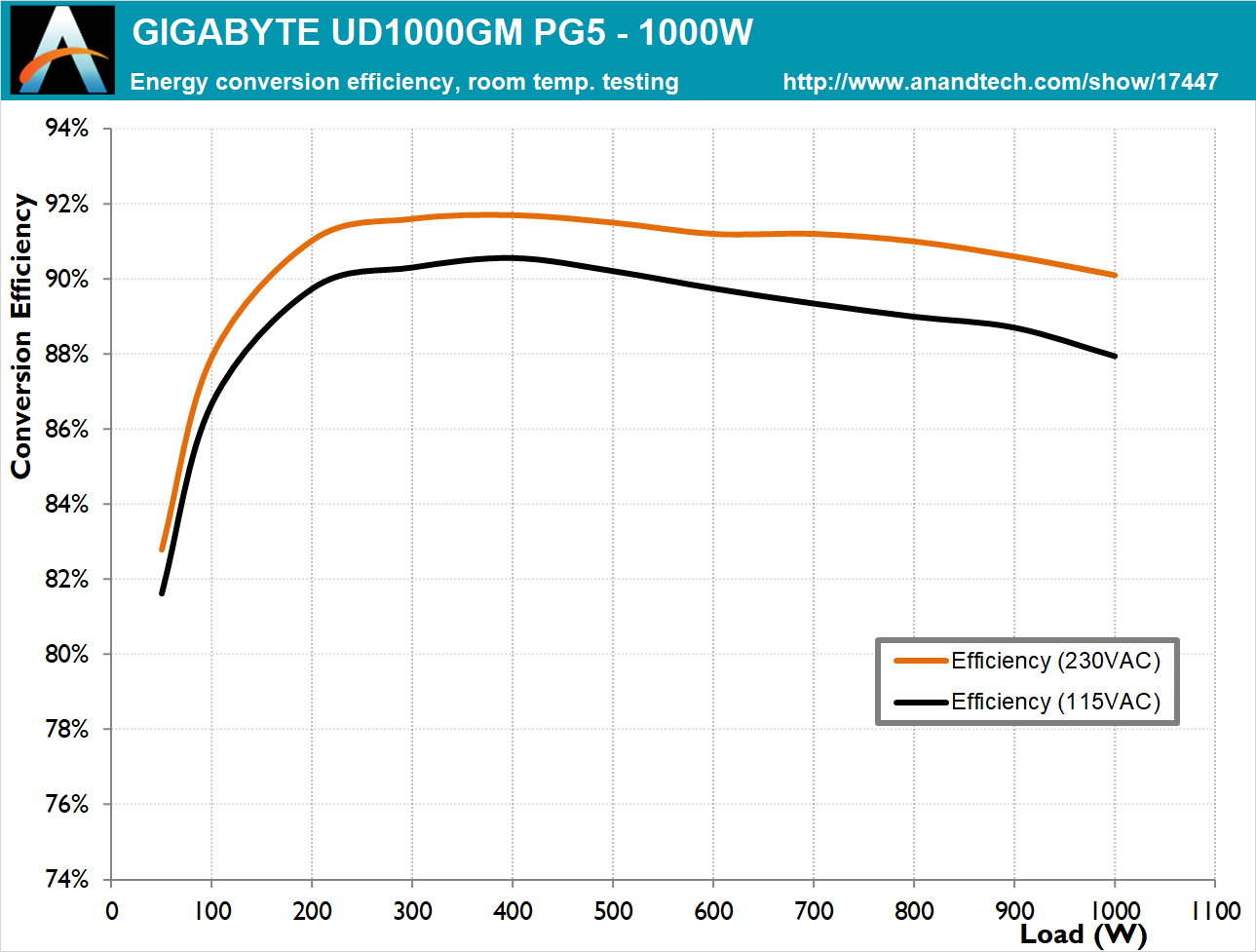
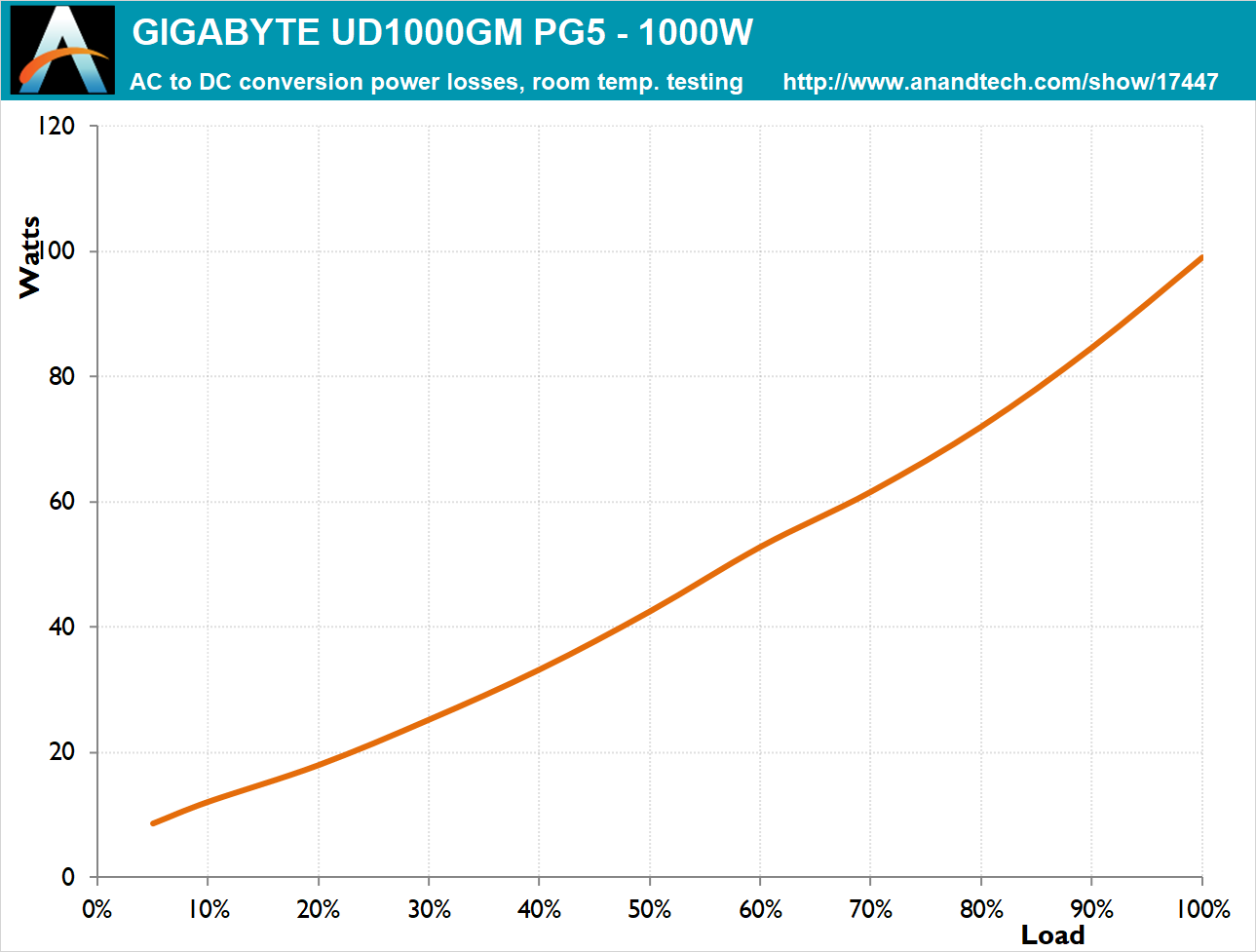
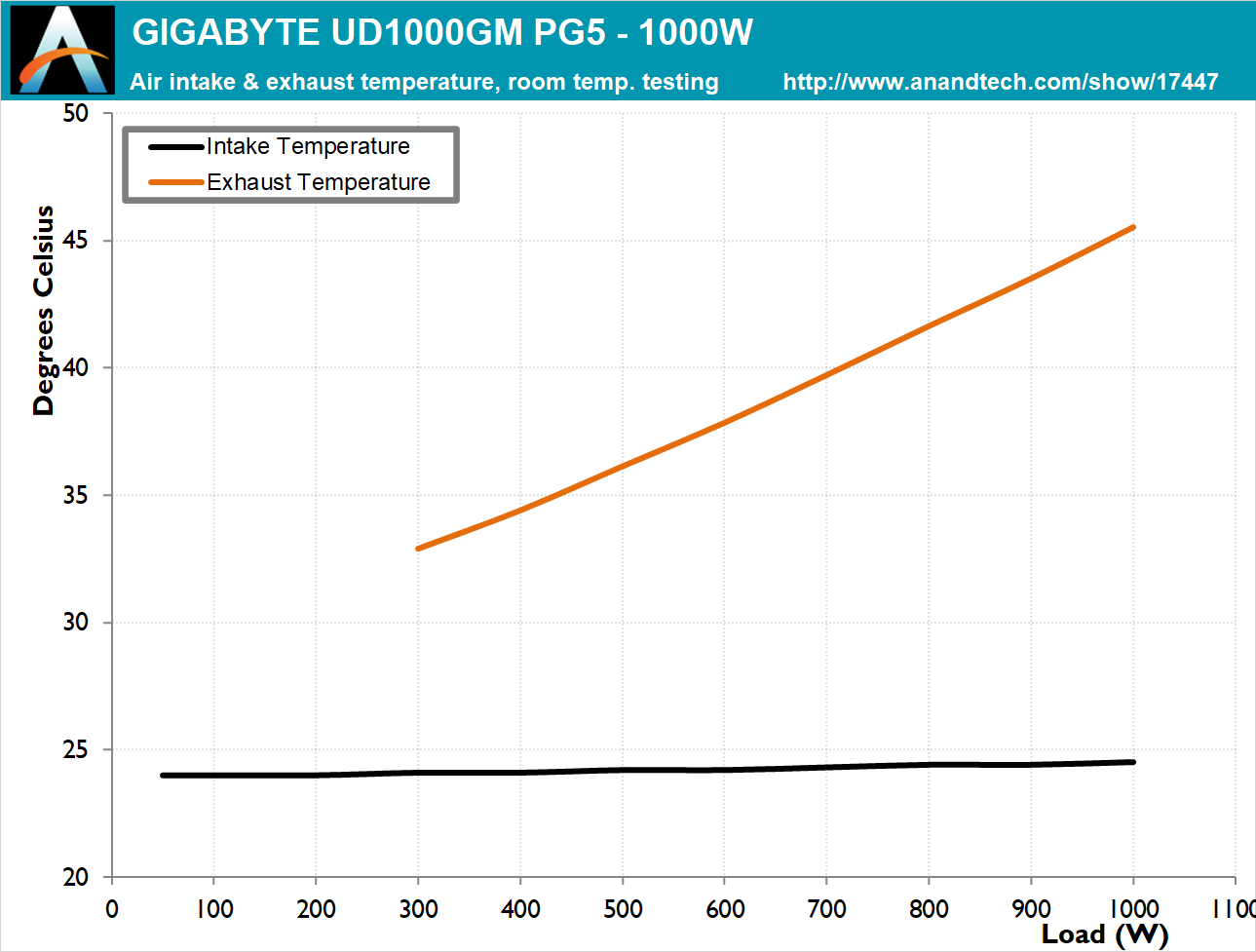
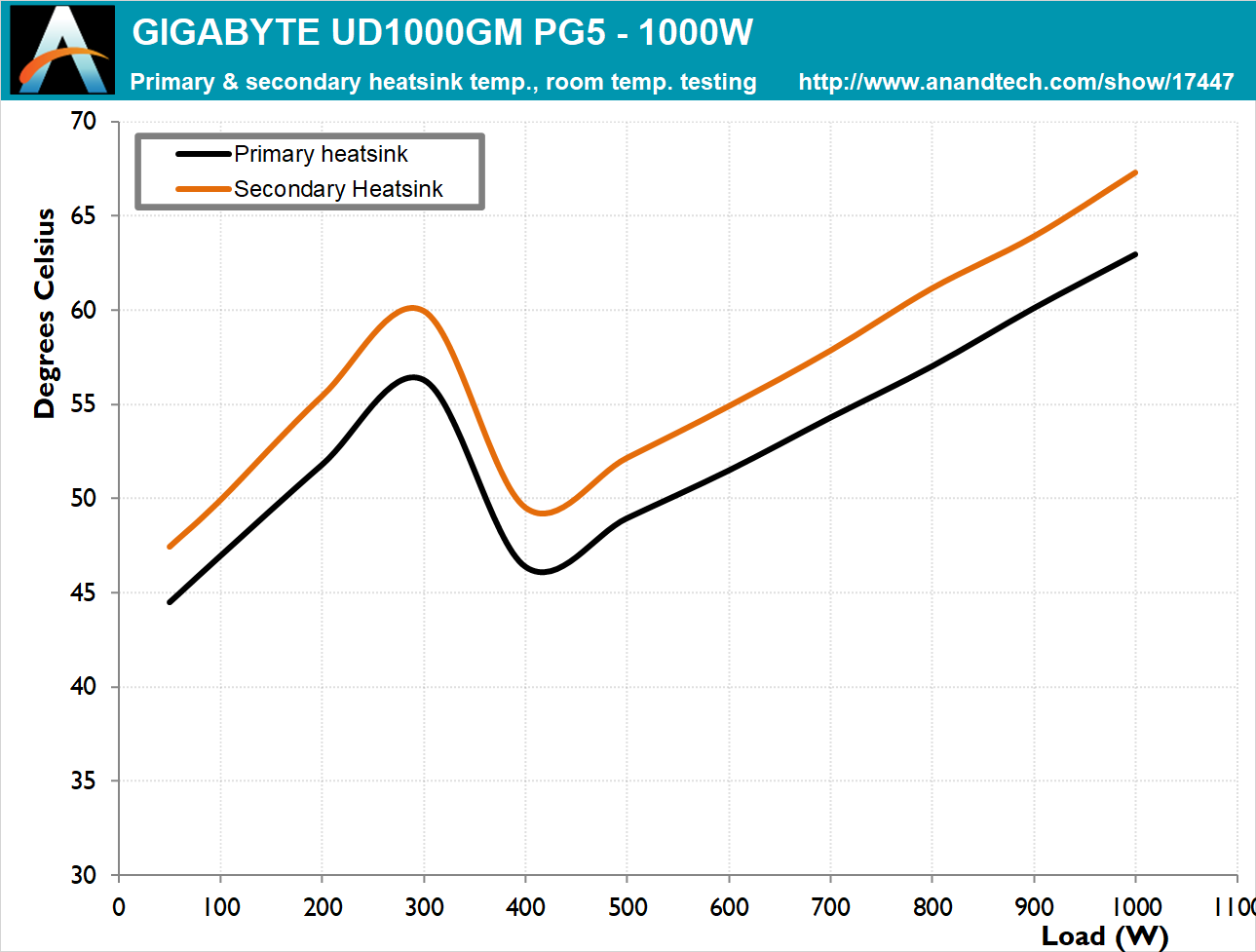
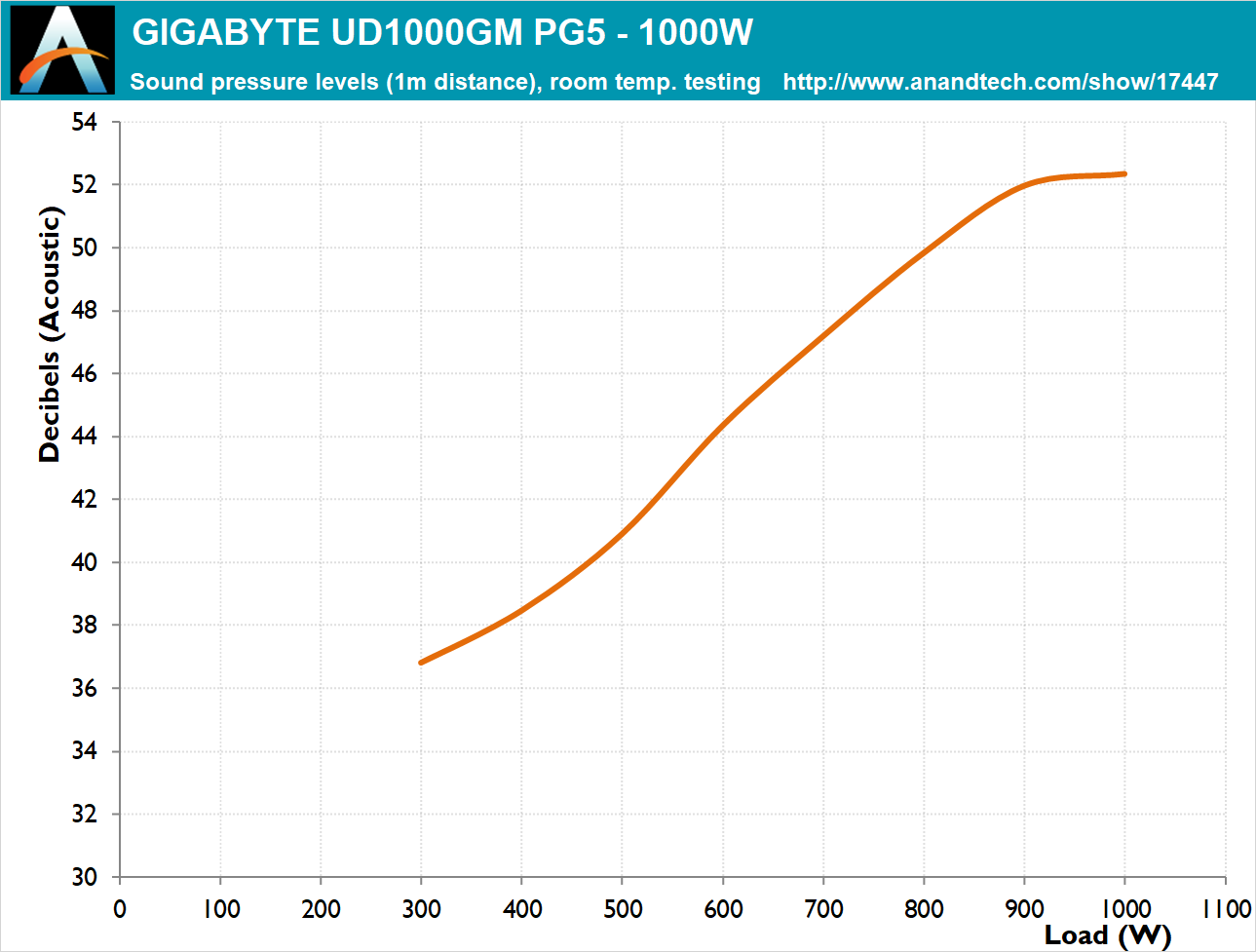








49 Comments
View All Comments
mode_13h - Monday, July 4, 2022 - link
> renewable sources as substitute of traditional coal/gas/nuclear powerplants> are just a dream of people who don't undrstand physics.
> We in Europe can see it for example in Germany.
In much of Germany, you should be able to get about 200 kWh/m^2 per year from solar. My personal electricity usage is 235 - 370 kWh per month. So, that means I'd just need about 22 m^2 of solar panels to average net zero consumption. However, I still have gas for cooking and heating, so that would need to be factored as well.
> You need to understand that not every country have sunshine like on Sahara,
You import virtually all of your oil and gas. Why should renewable energy be so different? Whatever you can't generate in-country, you could import in the form of hydrogen or perhaps some chemical form that can reuse some of the existing oil and gas infrastructure.
andychow - Tuesday, June 28, 2022 - link
H3 fusion, or any type of fusion, will never occur on earth. The high energy particles they release are just unstoppable and cause too much damage.Maybe we could do H3 fusion on the dark side of the moon, then send it back too earth by radio waves with a huge receptor that goes around the earth, but I seriously doubt that could happen this millennia.
niva - Wednesday, June 29, 2022 - link
Wrong.Firs of, when you type H3 are you talking about Tritium or Helium 3? What are these high energy particles you're talking about. You can look up fusion reactions and see that there are no exotic high energy particles that we cannot contain (like the type of particles you see in cosmic rays). This is true for all viable fusion reactions.
We have done fusion reactions on Earth, and we're getting closer to doing them for less energy than what the actual reaction outputs. This has been the main challenge which has thusfar prevented fusion from taking off... meaning, right now, we usually have to feed more energy into fusion reactors to start and maintain fusion, than the reactors can output.
Some entities have claimed success on those fronts recently too. Our main challenges going forward in terms of fusion is to better optimize the reactors, and to secure enough fuel.
The idea of beaming energy back to Earth from space is a neat one, until you microwave the entire surface of the planet by "accident".
mode_13h - Monday, July 4, 2022 - link
> The idea of beaming energy back to Earth from space is a neat oneIt's not a new idea. People have long talked about putting solar power stations in orbit and beaming down the power via microwaves. If you make the collector large enough, you can make it relatively safe for humans.
> until you microwave the entire surface of the planet by "accident".
Obviously, the larger the area, the lower the energy density. So, the concern wouldn't be "the entire surface", but rather cooking a city block... if one were dumb enough to use such a narrow beam.
mode_13h - Monday, July 4, 2022 - link
> Our long term plan for the planet shouldn't really involve worrying about 600W GPUs.It's not just top-end gaming GPUs, but a general trend that seems to be happening with GPUs and CPUs.
mode_13h - Monday, July 4, 2022 - link
> If GPUs ran on coal I'd be worriedSo much of worldwide power generation is indeed from coal or oil. Even gas isn't much better, depending on how much of it leaks during extraction and transportation.
RSAUser - Wednesday, June 29, 2022 - link
I'm still wondering if California will step in and put a max allowed for a consumer GPU.Also interested if this argument will matter when more and more move to renewable where it won't really matter outside of peak power usage.
mode_13h - Monday, July 4, 2022 - link
I feel like California's electricity prices are already high enough they don't need to.Tunnah - Thursday, June 23, 2022 - link
Gigabyte PSUs are radioactive. I can't imagine ANY enthusiast would risk buying them considering the debacle they went through. Truly a toxic product line. There's just too many great alternatives to take a risk. It's very much the case of "not even if it was free"flyingpants265 - Thursday, June 23, 2022 - link
It was the job of sites like Anandtech to do what GamersNexus did with exhaustive/destructive testing. GN also explained the phony PSU stickers, I think they've done such on other products as well, exposing plenty of shady industry practices and defective products.What we really need (and needed all along) was a chart, rating ALL products by advertised performance, their durability, and the warranty service. Like, a 3-year warranty doesn't help you if a card fails over and over again even outside the warranty period. And if my PSU fails, no way am I using a replacement of the same model that failed.
As usual, some real thought & genuine effort put into anything would be nice...